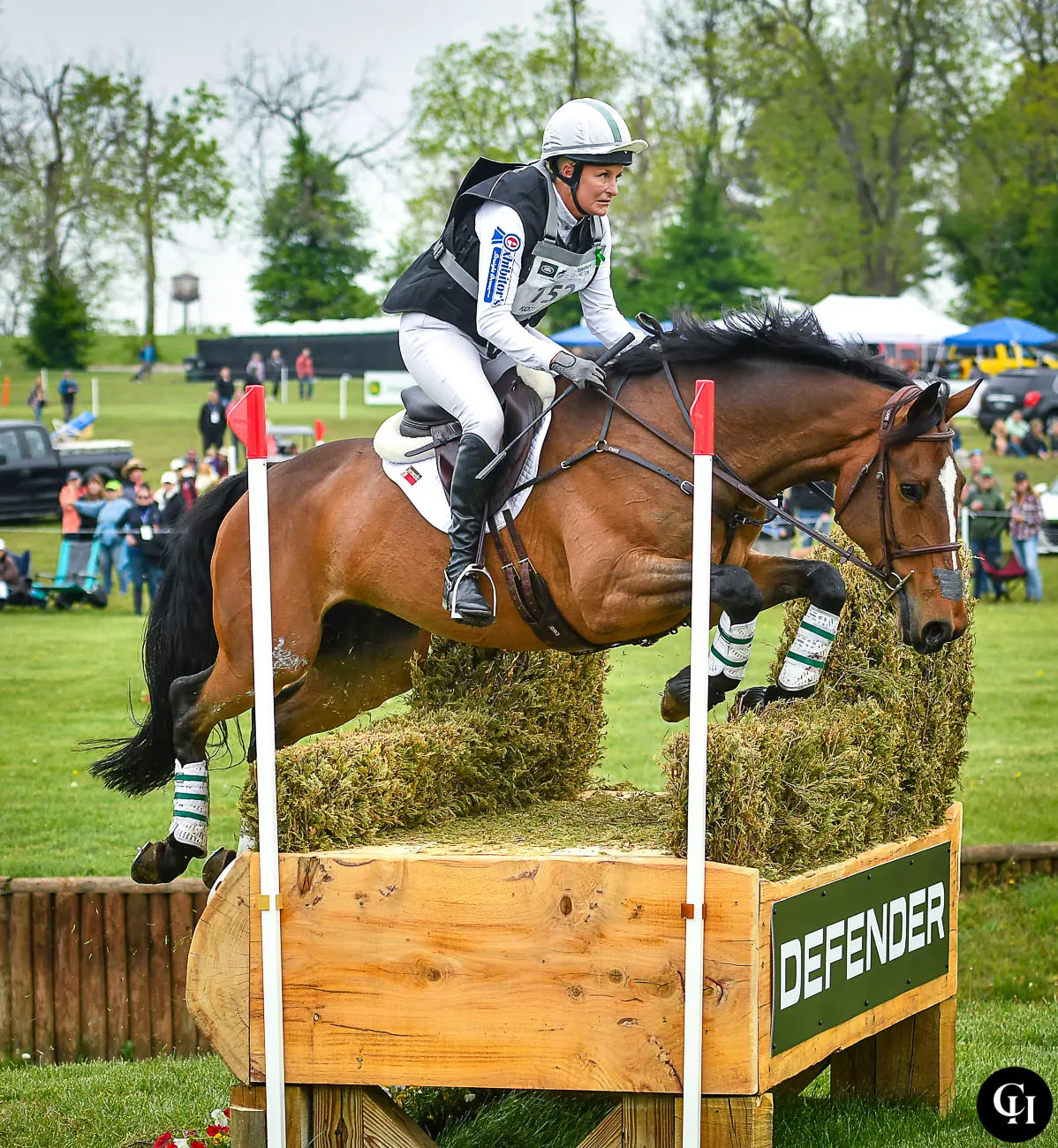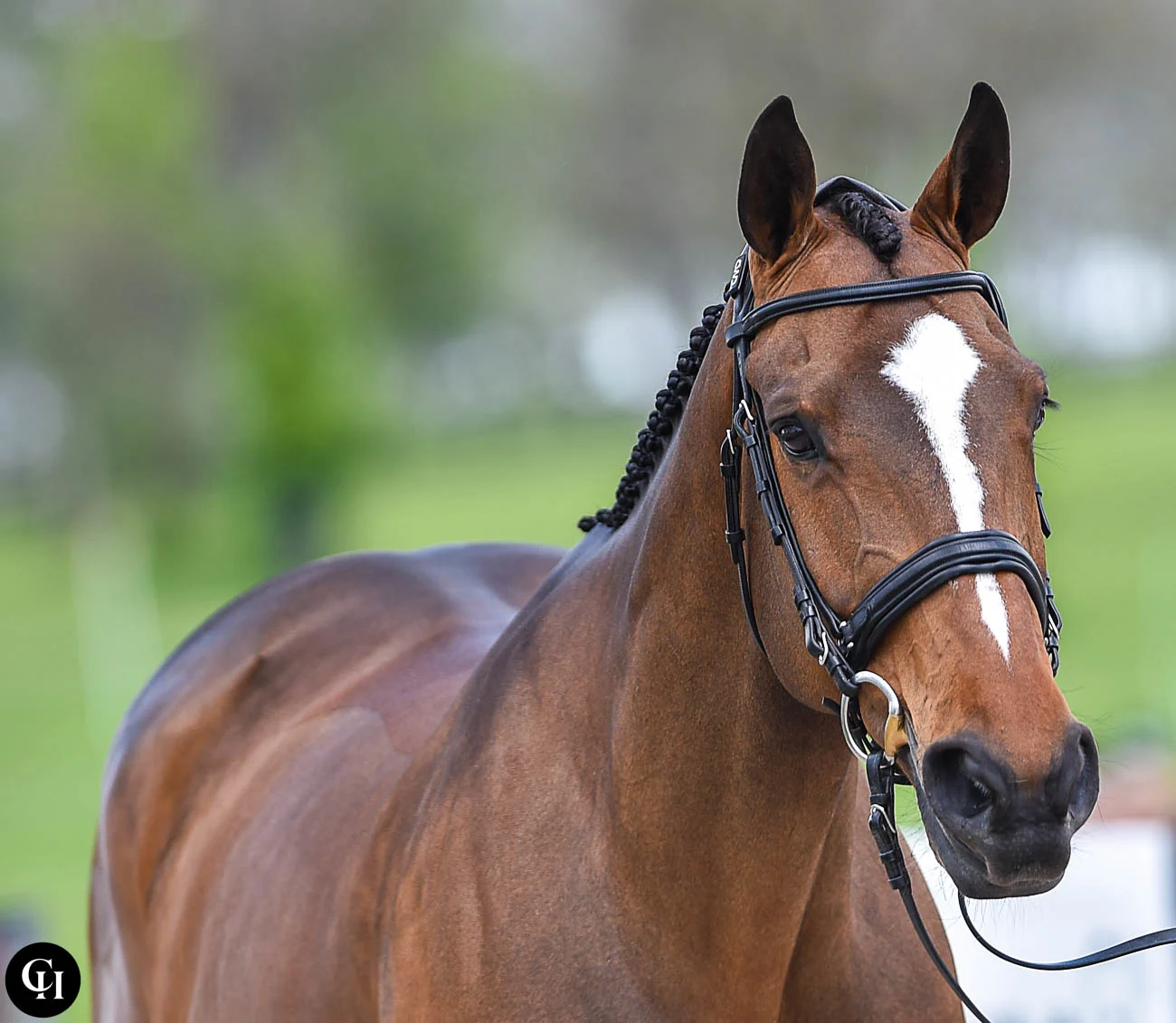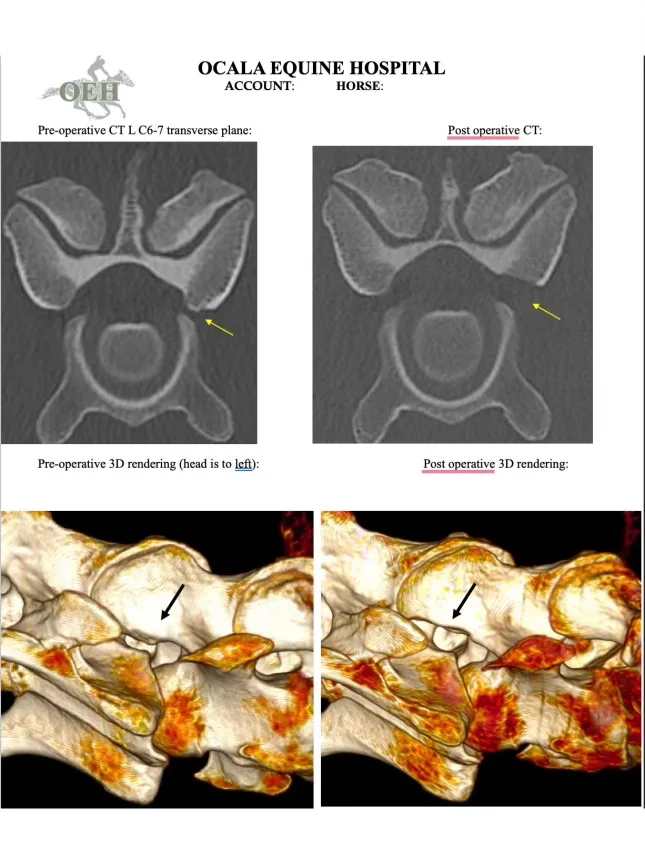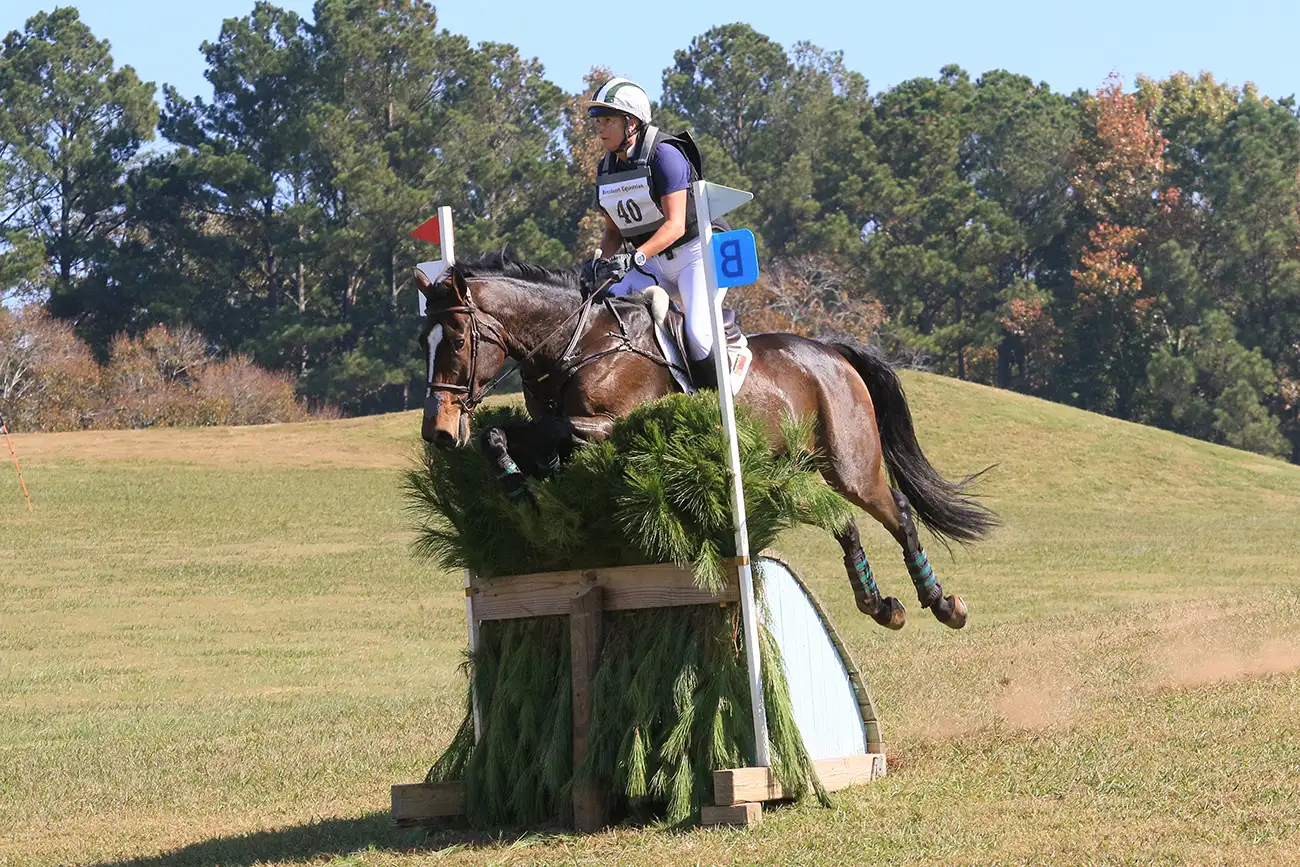Nearly three years ago, Sara Kozumplik got a call from her friend and fellow eventer Nilson Moreira Da Silva that his four-star mount, Rock Phantom, was for sale. Kozumplik had always liked the striking bay Irish Sport Horse gelding (Spirit House—Ballycroy Rose, Clonakilty Hero) bred by Maura O’Malley, and Da Silva wondered if she knew someone who might be interested in him.
“Honestly, when Nilson rung me about the horse, I didn’t think of him for myself—I didn’t think I was going to be able to raise the money to buy a horse like that,” said Kozumplik, who divides her time between Berryville, Virginia, and Ocala, Florida.
So Kozumplik shared the information with several friends who were in the market. But when none of them seemed overly interested in purchasing the gelding, she decided to try “Rocky” herself and clicked with him immediately. She talked to her longtime supporter Edy Rameika, and she was enthusiastic about coming on board.
“I wasn’t thinking at that particular moment of my life that I was going to try to take on that next thing,” said Kozumplik, who was finalizing a divorce at the time. “But Edy has been my main owner for nearly 25 years, and she said, ‘We need a horse to be out there and get back into this a bit.’ We were starting a few things fresh, and he was part of that.”
Rocky and Kozumplik made their competitive debut in late January 2022, running preliminary at Grand Oaks (Florida) before moving up to intermediate at Rocking Horse (Florida) the next month. Rocky’s weakest phase was show jumping, so Kozumplik also took advantage of jumper classes in open shows to strengthen his skills. In August, the pair made their CCI3*-S debut at Great Meadow International (Virginia), and the following month, finished seventh in the CCI4*-S at Stable View in South Carolina.
“The horse was being really good, and as I got to know him better, I had some good early results on him,” Kozumplik said. “Things were getting better and better, especially with his show jumping, and then about a year ago, he took a step back, and I couldn’t figure out why.”

Although the pair continued to experience competitive success in 2023—including a 15th-placed finish at the Cosequin Lexington CCI4*-S (Kentucky) and winning the Chattahoochee Hills CCI4*-S (Georgia) in October—as the season progressed, a few new issues began to emerge. First, Rocky started pushing harder into Kozumplik’s left leg than he had before, particularly when asked to rebalance from the gallop. Initially, he had been stiffer on his right side, but now, he was stiffer left. Occasionally, Rocky was a little slower with his left foreleg than his right in the air over a fence. And then there was the tripping—as long as she’d known him, whenever Rocky stumbled or took a stabby step, he would bolt forward.
“These are all things that ended up being symptoms,” Kozumplik said. “It happened progressively over time, where I didn’t notice it as much as I should have.”
Kozumplik turned to Jonathan Furlong, DVM, MSEd, of B.W. Furlong and Associates in Oldwick, New Jersey, for advice. Initially, they wondered if Rocky’s back was bothering him, but Furlong couldn’t isolate a problem; a lameness exam turned up nothing unusual. Ultimately, Furlong took several standing cervical radiographs and determined Rocky might have an area of compression between the C6 and C7 vertebrae in his neck. But overall, nothing definitive emerged, and with the support of her veterinary team, Kozumplik continued pursuing her training and competitive goals.
Then, at the Setters’ Run Farm Carolina International CCI4*-S in March 2024, Rocky and Kozumplik had a bizarre fall. Toward the end of what had been a solid cross-country run, she remembers seeing a good line and giving Rocky a positive ride to a brush fence into the final water complex. The next thing she knew, Kozumplik was out of the saddle and soaked, and her horse was scrambling to maintain his footing.
“He actually stayed on his feet, I don’t know how,” Kozumplik said. “I didn’t know what had happened—99.99% of the time when I have had a horse fall or almost fall, I know what went wrong. There has only been twice where it happened and I had no idea why, and one of those was at Carolina.”
Afterward, a friend shared a video filmed from the front—and Kozumplik could see just how badly Rocky had hung his left front leg at the fence. She sent the video to two trusted friends and five-star colleagues, Lynn Symansky and Hannah Sue Hollberg, and asked what they thought.
“We are so lucky in this sport to have a lot of good relationships, and they are both really good at this type of thing, to determine if a problem is veterinary or technical,” Kozumplik said. “And Lynn said to me, ‘He is really pushing into your left leg.’ She could see that in the video—and told me I should do a [computed tomography] scan of his neck.”
ADVERTISEMENT
The week after Carolina, Furlong referred Rocky to the team at Ocala Equine Hospital, where Travis Tull, DVM, DACVS, consulted. After Rocky’s CT scan—which gives a comprehensive 3-D view—Tull confirmed Furlong’s initial suspicion. Rocky was indeed experiencing compression in one area where his spinal nerves exit the spinal column, resulting in cervical radiculopathy. In layman’s terms, Rocky had a pinched nerve in his neck that was likely causing pain and interfering with the mobility of his left foreleg.
“The most common cause in horses is an enlarged articular process joint, which are paired joints between the vertebrae on either side of the spinal canal,” Tull explained. “The enlargement can cause a narrowing of the opening where the cervical spinal nerve travels to relay information to and from the spinal cord.”
Historically, initial treatment options for horses with the condition focus on a combination of physiotherapy and medical support; in Rocky’s case, Furlong performed an ultrasound-guided corticosteroid injection into the joint. When Kozumplik brought Rocky back to work post-injection, she immediately noticed an improvement in his way of going. As a test, she re-created the type of jump he had struggled with at Carolina, and she noted he used his left forelimb “completely differently.”
With the 2024 Defender Kentucky CCI5*-L still on their calendar, Kozumplik took Rocky to one final horse trial as a prep and status assessment. Not only did Rocky feel better, he won his intermediate division; after consulting with her veterinary team and Rameika, Kozumplik decided to press onward to Kentucky.
“Everyone was really excited; the horse felt a lot better, and he had the miles—I decided to go,” Kozumplik remembered. “But this was in the back of my mind: If this horse goes out there, and he’s not jumping well, then I’m pulling up.”

Despite a solid warm-up, Kozumplik sensed almost from the moment Rocky came out of the start box in Kentucky that he wasn’t in top form. When Rocky refused the first water at Fence 5, Kozumplik put her hand up and called it a day.
“I don’t know. It could have been a bit mental on my part, because I knew he had this issue,” she said. “He is such a sweet, kind horse, and when he stopped at the water, I just thought, ‘Absolutely not.’ ”
During Rocky’s assessment at Ocala Equine, an additional treatment option had been presented—a newer procedure called a percutaneous single portal endoscopic foraminotomy. Pioneered by German veterinarian Dr. Jan-Hein Swagemakers in 2020, in a foraminotomy, surgeons insert a specialized endoscope alongside the affected articular process joint through a small incision in the skin, then use various tools to remove the excess bone, create more space and reduce pinching of the nerve. Horses tend to do well following the procedure; rehabilitation begins just three days later, and most are back in ridden work after six weeks.
Kozumplik said the decision to do the foraminotomy was “a bit of a no-brainer.”
“Regardless of what he would come back to do, I knew it would make his quality of life better,” she said.

Rocky’s connections knew the gelding would be in capable hands with Tull. In August 2023, Tull had performed the first foraminotomy in the United States; since then, he has taught 18 other veterinarians how to do the procedure. Ocala Equine is one of just eight hospitals nationwide currently offering foraminotomy, but Tull said its availability has improved the possible outcomes for horses experiencing cervical radiculopathy.
“Before the advent of foraminotomy, the only options were medical treatment or cervical spinal fusion,” he said. “After foraminotomy surgery, horses are rehabilitated to improve their mobility, proprioception and core muscular strength.”
Rocky’s surgery was performed just after Kentucky in early May, and despite being five-star fit at the time, his sensible nature made him a good patient. He was back in the field as soon as possible post-surgery, and immediately began his unmounted rehabilitation work that included walking on uneven surfaces, walking up and down small hills and going on and off blocks.
ADVERTISEMENT
In hindsight, Kozumplik realized that Rocky had often struggled with undulating and uneven surfaces. As he worked through his recovery protocol, the issue resolved, and Kozumplik also noticed Rocky became more supple over his topline.
“Before his surgery, he would get tight in the canter, both in the dressage and a bit in the jumping,” she said. “And of course, there was his reaction to getting stabby or tripping. All of that went away.”
By mid-summer, Rocky was back in full work, and Kozumplik made a plan to return him to competition. After a successful run at preliminary late in July, she entered him in the intermediate at the USEA American Eventing Championships, held at the Kentucky Horse Park in August.
“Intermediate is a level that is quite easy for him, and I thought running through those waters in Kentucky would give him a lot of confidence,” she said. “It’s big enough but not too hard, and I thought we would see where we are.”
Despite the heat that week, Rocky felt solid on cross-country, only tiring slightly at the end of the course, and he wasn’t leaning into Kozumplik’s left leg. But it was perhaps his show jumping performance the next day that proved the most informative.
“He felt weak, almost like his left side was atrophied,” Kozumplik recalled. “He has a big heart, and he tried his guts out—and I had more information.
“I wanted to test him at the four-star level before I gave him a break for winter, but after AEC, I knew he was not strong enough,” she continued. “He needed to do more at the three-star level.”

She entered Rocky in three-star competitions held at Plantation Field (Pennsylvania) in September and Morven Park (Virginia) in October. Kozumplik focused on giving Rocky a positive ride and adding more speed—and at Morven, with a clean show jumping round, they won. After those successful runs, Kozumplik decided Rocky was ready to return to the four-star level. And at the Bouckaert Equestrian International (Georgia) in late October, he did so with style—delivering three solid phases to finish first.
It was there that Kozumplik knew she truly had her horse back.
“There were some fairly big rails into the last water, and I didn’t get a great ride into it,” she said. “I missed a bit, but he was very good and made up for it. It made me believe that he feels much better.”
The Bouckaert International is the second qualifier in the new US Equestrian Open series, which offers significant prize money and will culminate in a championship final next fall at Morven Park. Kozumplik thinks the series will suit the 13-year-old gelding well, and she plans to focus on those events with a goal of contesting the final.
“If he does that well, then I’ll bring him to Kentucky the spring after that,” she said. “But honestly, if the horse never does a five-star, I’m OK with that, too. If he’s happy at the four-star level, I’m fine with that. He’s a really nice horse.”
Do you know a horse or rider who returned to the competition ring after what should have been a life-threatening or career-ending injury or illness? Email Kimberly at kloushin@coth.com with their story.














